PLANT HEALTH NEWSLETTER
Utah IPM Program and Utah Plant Pest Diagnostic Laboratory
IN THIS ISSUE
Rust to the Rescue
Ants in the Home
The Cigarette Beetle
Edema (or Oedema)
Ethylene damage in Greenhouses
Utah’s Transition to Organic Project
Guiding Commercial Vegetable Production
Videos Provide High Impact Pest Management Education
2024 Commercial Tree Fruit Production Guide
EPA Makes Changes to Protect Endangered Species
NEW MEDIA
The Backyard Garden: Garlic Pests
The Backyard Garden: Sweet Corn Pests

Spring-Summer 2024
Vol. XVII
Utah Pests is now Plant Health
In 2007, Utah State University Extension entomologists, plant pathologists, and members of the Utah Plant Pest Diagnostic Lab (UPPDL) formed the group, Utah Pests, to serve the citizens of Utah. The work of this group, including the initiation of Utah Pests News, led to extensive impacts, including ongoing state funding of the UPPDL. We addressed hot topics such as bedbugs, Lyme disease, and black pineleaf scale, and identified almost 30 new invasives to the state including red fire bug, elm seed bug, and brown marmorated stink bug.
Today we announce a new identity for the team, now called the PLANT HEALTH group. This new name reflects more of what our team does, beyond identifying and managing plant pests. PLANT HEALTH incorporates all the tenets of integrated pest management, including soil health, protecting pollinators and beneficial organisms, and promoting non-chemical pest management strategies over pesticides.
The re-branding changes will occur over time, starting with our social media pages and this newsletter, with our website to follow. Our team looks forward to continuing to address hot topics and emerging and new pest issues, and serving the citizens of Utah to keep plants healthy!

PLANT HEALTH TEAM
Marion Murray
IPM Project Leader Plant Health News Editor mair.murray@usu.edu 435-797-0776
Claudia Nischwitz Plant Pathologist claudia.nischwitz@usu.edu 435-797-7569
Nick Volesky
Vegetable IPM Associate nick.volesky@usu.edu 435-797-0319
Rust to the Rescue: Enhancing the Efficacy of a Biological Control for Canada Thistle Management
Author, Caitlin Henderson, is a PhD graduate student in the USU Department of Biology, under Dr. Robert Schaeffer (Plant-Microbe-Insect Interaction Laboratory), studying biocontrol mechanisms for weeds.
Canada thistle (Cirsium arvense) is an invasive weed found throughout the world. In Utah, it is considered noxious and is listed as Class 3, requiring containment given its threat to the agriculture industry. The weed also poses a considerable threat to rangelands and other natural areas, as it can outcompete native plants and affect forage quality.
Canada thistle is difficult to control largely due to the continually-growing root system throughout the season, which propagates new plants as clones. As a result, it can generate large patches in invaded areas in a short period of time. Herbicides are not always ideal, as the chemical may not spread throughout the host and its root system and application in natural areas can also be a challenge. Therefore, alternative methods are needed.
Utah Integrated Pest Management Program
Utah Plant Pest Diagnostic Lab
Utah State University 5305 Old Main Hill Logan, UT 84322
To subscribe, click here.
All images © USU Extension unless otherwise credited.
extension.usu.edu/ planthealth

Biological control agents (BCAs) of weeds rely upon natural enemies for population control. The advantage of BCAs is that it is a long-term management tool, as BCAs have the potential to continue to develop and spread once established. BCAs can also reach areas that are difficult to access, especially with equipment.
The Canada thistle rust fungus (Puccinia punctiformis) is a BCA of Canada thistle that only infects this plant and has been naturalized with the weed, likely since its introduction in the 1600s. It can be easily identified by the yellow, orange, or brown spores that form on the undersides of thistle leaves. It also has a distinct floral smell, which can be detected in infected Canada thistle patches. The fall stage of the rust pathogen (telia bearing teliospores) is what has been used for the distribution and inoculation of Canada thistle in other areas. Plants are collected with these spores, dried, and ground, and can then be used for broadcasting across a patch to encourage infection.
continued on next page
extension.usu.edu/planthealth Plant Health Newsletter / Spring-Summer 2024 / page 2
GUEST AUTHOR SPOTLIGHT
Canada thistle flowers. Image courtesy Caitlin Henderson.


There have been several research projects in the Intermountain West that have looked at methods for increasing the efficacy and adoption of this BCA. As an example, Ph.D. student Caitlin Henderson in Dr. Robert Schaeffer's lab at Utah State University has been investigating its compatibility and effectiveness with other management practices commonly used for weed control (e.g., herbicide application), with experiments performed in Utah and neighboring Colorado.
Other ongoing research is looking at barriers to pathogen establishment in the host, including microbe-microbe interactions on and in leaves that could affect spore germination and infection.
Understanding how the pathogen infects Canada thistle and what may help increase its infection and spread will help us control this noxious weed.
Ants in the Home
Author, Ernane Vieira-Neto, is an Entomologist and currently a Postdoctoral Fellow in the USU Dept of Biology.
Ants are everywhere! More than 12,000 species have been identified, and near as many have yet to be discovered worldwide. Ant species have multiple nest location and food preferences, and their colonies range from a few hundred to millions of individuals. Recent estimates indicate 20 quadrillion ants live on the planet’s many environments, which is about 2.5 million ants for every human!
As social insects, functions in an ant colony are performed by different individuals, and ant foragers in particular can
go to great lengths to bring resources back to the nest. That’s why ants have important ecological functions such as seed dispersal, predation, soil aeration, decomposition, and are also part of the diets of other species.
However, they also pose occasional challenges as household pests because many of their food and shelter interests can be easily found in the safe, warm (and sometimes moist) home environment. As such, understanding their behaviors and habitats is paramount for effective management practices by homeowners.
continued on next page
extension.usu.edu/planthealth Plant Health Newsletter / Spring -Summer 2024 / page 3
Rust to the Rescue, continued
ENTOMOLOGY NEWS AND INFORMATION
Canada thistle patch, Park City, UT (left). Canada thistle infected with rust, at the aecial stage of disease (rust-colored spots on leaves which bear aeciospores) (right). Images courtesy Caitlin Henderson.
Ants in Utah
More than 200 ant species are found in Utah's diverse landscapes. With spring upon us and summer on the horizon, these are some common ants encountered in the region and a brief refresher of the issues they could cause for humans:
Pavement ants (Tetramorium caespitum): Small brown ants that often nest beneath patios, sidewalks, driveways, and rocks. They are attracted to sugary foods and can become indoor nuisances.
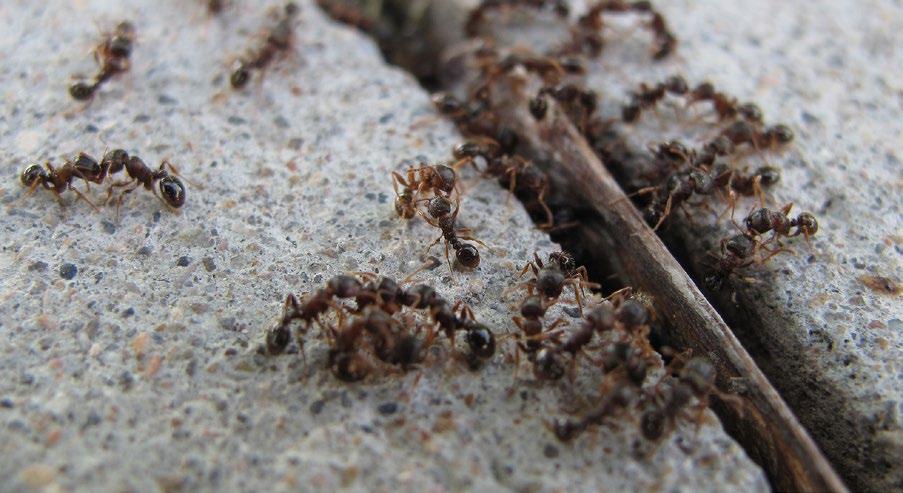
Carpenter ants (Camponotus species): Although not as damaging as termites, carpenter ants can still cause structural harm by excavating galleries for nesting. Their nests are typically found outside in forests/wooded areas and yards, but they may infiltrate and establish within homes.

Odorous house ants (Tapinoma sessile): These ants emit a distinct, unpleasant odor when crushed, and often enter homes in search of food and moisture, particularly sweets and grease.
Pharaoh ants (Monomorium pharaonis): These tiny yellow ants are notorious household pests known for their rapid reproduction and ability to infest buildings. They are attracted to a wide range of foods and can nest in hard-to-access areas such as wall voids and electrical outlets.
Harvester ants (Pogonomyrmex species): These larger ants are commonly seen in open areas like grasslands and deserts, where they construct conspicuous nests. They are generally not considered household pests.
Fire ants (Solenopsis invicta): Though not as widespread in Utah, localized populations can still be found. Their painful stings and aggressive nature are concerns for both humans and pets.
Managing Ants in the Landscape
Each situation involving pest ants is unique. Homes have different ages, materials, surroundings, and maintenance statuses. Infestations require an appropriate assessment and specific strategies to identify the ant species, gauge the extent of the problem, and implement the best approach to control and manage the issue.
These are some common strategies (which can be used in combination for increased effectiveness) to help prevent or minimize issues with ants in a household:
1. Sanitation: Maintaining cleanliness is the primary step in ant management. Storing food in airtight containers, promptly cleaning spills and crumbs, and regularly disposing of trash help eliminate food sources that attract ants.
2. Sealing entry points: Seal cracks and crevices around doors, windows, and foundation walls to minimize (and potentially prevent) ant entry. Replace damaged weather stripping and repair screens to thwart ant ingress.
3. Landscaping practices: Trim vegetation away from building perimeters to create a barrier to ants. Keep mulch and leaf litter clear of foundations, as they provide micro-habitats where ants can thrive.
4. Natural predators: Allow natural ant predators, such as birds and predatory insects, to be around your home by providing suitable habitats and refraining from using pesticides harmful to beneficial continued on next page
extension.usu.edu/planthealth Plant Health Newsletter / Spring -Summer 2024 / page 4
Worker carpenter ants (Camponotus spp.) are much larger than pavement ants. Image courtesy Susan Ellis, Bugwood.org
Ants in the Home, continued
Pavement ants in a war over territory.
organisms. Installing bird feeders (and keeping them clean) and maintaining native plant gardens can attract ant predators.
5. Baits: When necessary, employ ant baits containing slow-acting insecticides strategically placed near ant trails and active areas. Please ensure bait stations are out of reach of children and pets. Refresh baits regularly for continued effectiveness. Vary the bait to determine the most effective one and use them in combination with other control methods.
6. Chemical treatments: While chemical insecticides can be effective against ants, their use must be careful and according to label instructions to minimize environmental impact and potential harm to nontarget organisms. Consider using low-toxicity options in combination with other control strategies.
7. Professional control: In severe infestations or when DIY methods fail, consulting a licensed pest control professional is recommended. They can assess the situation and implement targeted treatments to eradicate ant colonies. Professionals may use advanced techniques such as insect growth regulators or non-repellent sprays for long-term control.
Ants are integral components of Utah's landscapes, performing essential ecological roles while occasionally encroaching on human spaces as pests. By comprehending their behaviors and preferences and implementing proactive management strategies, homeowners can effectively mitigate their impact on households and landscapes. With diligence and informed action, humans and ants can coexist in harmony, preserving the Utah's natural beauty and the homeowner’s peace-of-mind.
The Cigarette Beetle
The cigarette beetle (Lasioderma serricorne) is also known as the tobacco beetle. It is considered a stored-product pest and is responsible for huge losses in packaged products. Both the adults and their larvae feeds on grains, seeds, packaged food, and other plant and animal derived commodities. This particular pest has a worldwide distribution but is more concentrated in areas that deal heavily with tobacco and cigarettes.
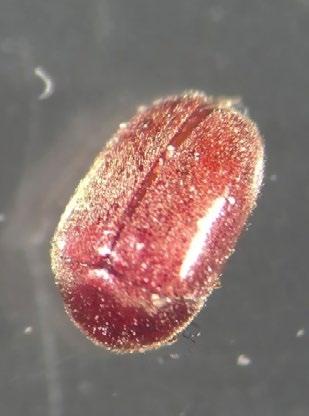
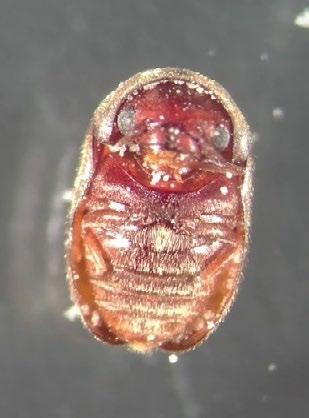
Cigarette beetle larvae are white and look like fuzzy grubs. After five to ten weeks, larvae mature and pupate into adults that live for 2 to 4 weeks. An adult female can lay over 90 eggs. Over the course of a year, cigarette beetles will go through 3 to 6 generations.
The cigarette beetle is small, measuring around 1/8 inch. It has an oval to rounded shape and the outer shell is reddish-brown in color. Viewing the beetle from above, the head is not apparent because it is covered by a piece of shell. The beetles prefer hiding and thriving in dark recesses. When they are exposed to bright light, they
will immediately fly in search of darkness.
The cigarette beetle is very similar to the drugstore beetle. There are two characteristics that can be used to distinguish the two. The antennae of the cigarette beetle have serrations similar to a saw blade, while the antennae of the drugstore beetle are smooth, and end in a three-segmented club. The other distinguishing feature is the elytra (large shell of the beetle that covers the wings). The elytra of a cigarette beetle is smooth while the elytra of a drugstore beetle has striations that give it a lined appearance.
If infested food items are found, they should be discarded in outdoor trash or placed in a refrigerator, freezer, or in heat treatment (see Cabrera 2021 for details). Keeping storage areas clean and storing products in sealed containers minimizes re-infestations.
Resources
Cabrera, B. J. (2021). Cigarette beetle - Lasioderma serricorne F. University of Florida Entomology & Nematology; Publication Number: EENY-227
Timothy Miller, Research Technician, Extension Plant Pathology Lab
extension.usu.edu/planthealth Plant Health Newsletter / Spring -Summer 2024 / page 5 Ants in the Home, continued
View of cigarette beetle from above (left) and below (right).
Edema (or Oedema)
Edema is a physiological disorder. It is commonly associated with foliar symptoms of fruits, vegetables, and some ornamentals, occurring when the roots take up water faster than the plant can transpire during high relative humidity. It can also be seen on tubers, such as potato or dahlia or on stems when the soil is very wet for extended periods of time.
Due to the excessive uptake of water, pressure builds in leaf cells and eventually they burst. The injury becomes more obvious a few days later when the damaged area gets a corky appearance on leaves. On stems, bumps develop on the lower part of the stem. On tubers, burst cells have a white, cauliflower-like appearance. Plants with foliar or stem symptoms usually recover but there is no information whether damage to tubers will result in rot due to infection with soilborne pathogens.
The development of edema can be minimized by careful irrigation. Avoid over-watering, especially on days that are overcast with higher humidity. In flood-irrigated fields, let the soil dry before irrigating again.
More information can be found here: extension.usu.edu/ pests/ipm/notes_orn/list-treeshrubs/oedema.
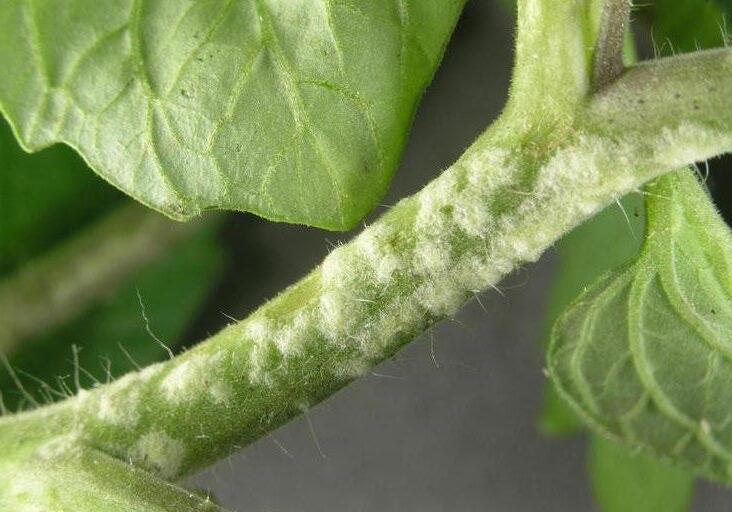
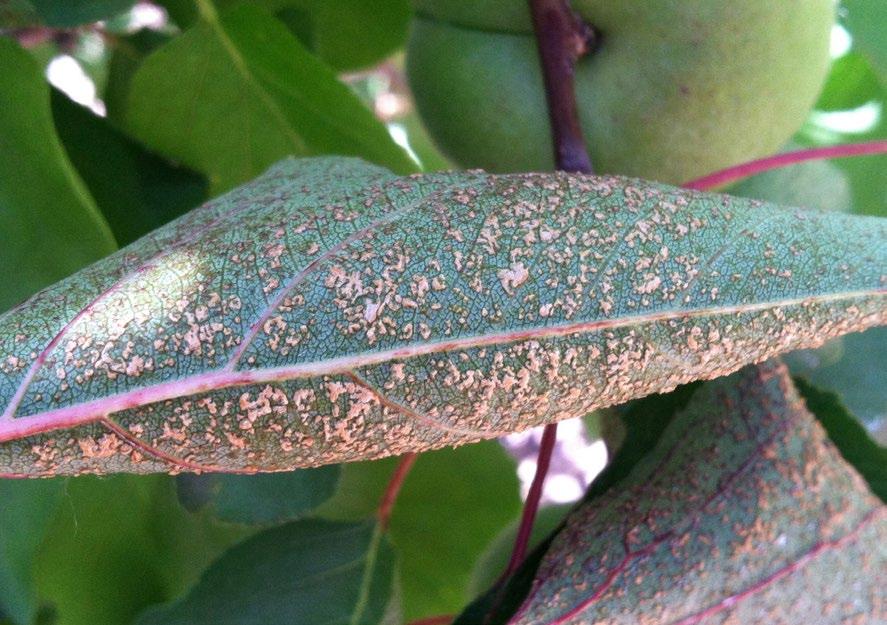
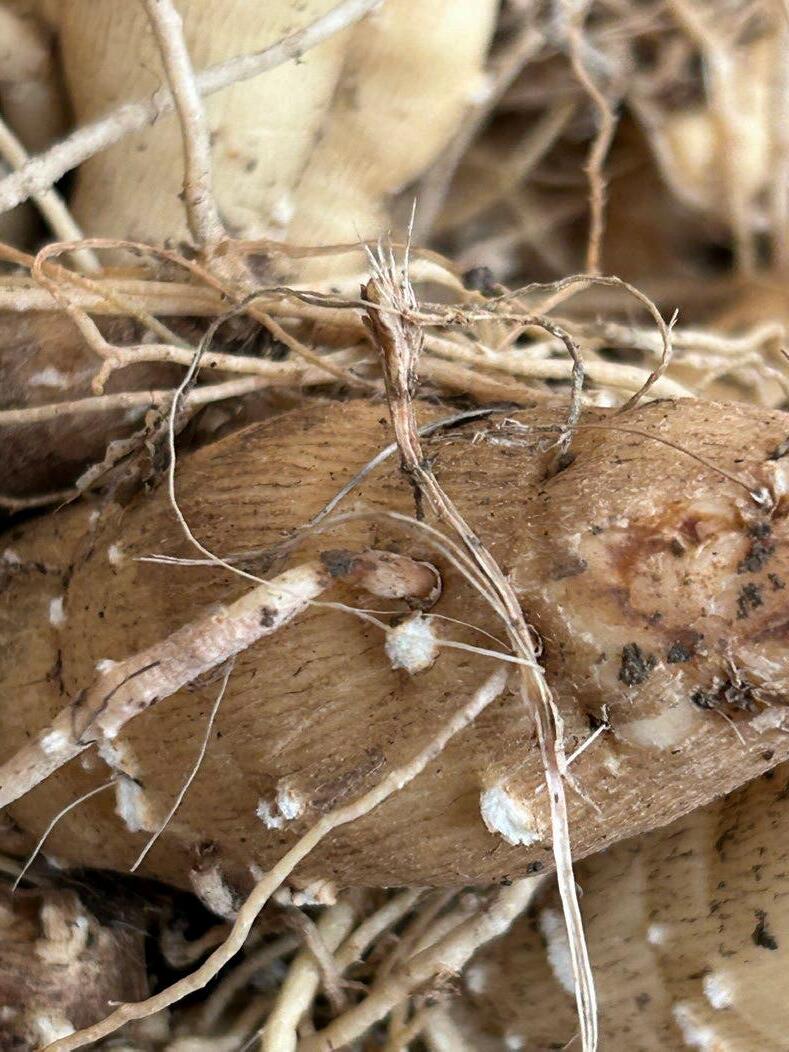
extension.usu.edu/planthealth Plant Health Newsletter / Spring -Summer 2024 / page 6
PLANT PATHOLOGY NEWS AND INFORMATION
Symptoms of edema on the underside of an apricot leaf.
Claudia Nischwitz, Extension Plant Pathologist
Edema on tomato stem. Image courtesy Bruce Watt, University of Maine, Bugwood.org
Edema symptoms on dahlia tuber.
Ethylene Damage on Transplants in Greenhouses
Ethylene gas is an important odorless and colorless plant hormone with several benefits to the plant. Depending on concentration levels, it affects leaf and flower development as well as plant senescence. It also stimulates fruit ripening. Unripe fruit has very low levels of ethylene and is not affected by ethylene added from the environment. As fruits ripen, ethylene levels in tissue increase and the fruit responds by ripening and becoming over-ripe faster. Different fruit species release and respond differently to ethylene. Very ripe bananas, for example, release quite a bit of ethylene. Placing apples that are sensitive to ethylene together with very ripe bananas can speed up apple ripening.


Ethylene can also have adverse effects on plants, especially in greenhouses where transplants are growing. Ethylene may be produced by maladjusted or malfunctioning propane or oil heaters and poor ventilation of exhaust. Since the gas is color- and odorless it may go unnoticed for a while. Vegetables like tomatoes and ornamentals like dahlias can developed distorted leaves or stems (Fig. 1-3), thickening of stems, stunting of plants, epinasty (where leaves curl or droop), abscission of leaves, and abortion of flowers and leaves.
Ethylene damage can be avoided if heaters are regularly checked and maintained. When purchasing a new heater, make sure the heater has a vent to the outside so exhaust from the heater does not accumulate in the greenhouse. The vent should be checked regularly so that it doesn’t leak. Tomato plants are extremely sensitive to ethylene. They develop symptoms quickly and could be planted as an indicator plant in a greenhouse. Once the ethylene exposure stops, most plants will recover by producing healthy new foliage within a couple of weeks. However, it could delay flowering and very young seedlings may not recover.
Claudia Nischwitz, Extension Plant Pathologist

extension.usu.edu/planthealth Plant Health Newsletter / Spring -Summer 2024 / page 7
PLANT PATHOLOGY NEWS AND INFORMATION
Malformed dahlia leaf after exposure to ethylene (left). Cupped dahlia leaf after exposure to ethylene (right).
Distorted growth of tomato stem and leaves after ethylene exposure.
Image courtesy A. Madeiras, University of Massachusetts
Thinking about becoming Certified Organic?
Utah’s Transition to Organic Project

If you produce agricultural products for commercial sale, want to grow in alignment with natural systems, and access a historically high demand market, then organic certification may be a great option for your operation. In the certified organic marketplace, producers receive a market premium for their products, consumers can trust their food was grown using organic principles, and the environment is benefited through soil, water, and biodiversity conservation. USU Extension’s Transition to Organic Partnership Program (TOPP) is working to assist those interested in transitioning to certified organic.
What is USDA Certified Organic?
In order to sell, label, or advertise any agricultural product as organic, it must be produced in compliance with the National Organic Program (NOP) federal regulations and verified by a USDA-accredited certifying agent.
Organic crop, livestock, and handlers develop and implement an organic system plan (OSP) and apply with a certifying agent. If your operation currently uses prohibited materials, as defined in the federal regulation, there is a necessary 36-month transition period before your land
can be certified. After review of your application, an initial inspection and approval from your certifying body, your operation is certified organic! Each year you will be required to make any OSP updates and undergo a yearly inspection to maintain certification.
This process can be challenging, but with USU’s new Transition to Organic Partnership Program, you don’t have to do it alone!
What is the Transition to Organic Partnership Program?
USU Extension is partnering with the USDA’s ‘Transition to Organic Partnership Program’ or TOPP. TOPP is six regions working together nationwide towards a common goal: to grow the network of organic producers.
In Utah, USU’s TOPP team is working in four key areas to help Utah farmers transition to certified organic:
1. Mentorship: Connecting experienced certified organic producers with those transitioning to help
continued on next page
extension.usu.edu/planthealth Plant Health Newsletter / Spring -Summer 2024 / page 8
GENERAL IPM NEWS AND INFORMATION
guide them through the transition process and offer direct farmer-to-farmer mentorship
2. Technical Assistance: Connecting producers to an organic production resource library, workshops, field days, and educational events
3. Community Building: Foster connections within the organic agriculture community to facilitate networking and collaboration
4. Workforce Training and Development
Creating targeted training and education for the organic workforce along the entire supply chain.
Want to Get Involved as an Organic Mentor or Mentee?
No matter your size or what you produce (grains, veggies, fruit, or livestock), if you are certified organic or thinking about transitioning, we want to hear from you!
Mentees are transitioning producers who own or are employed by an existing agricultural operation. Mentees will receive 40 hours of direct, real-time, one-on-one mentorship, as well as a $500 travel and education stipend over the course of a year.
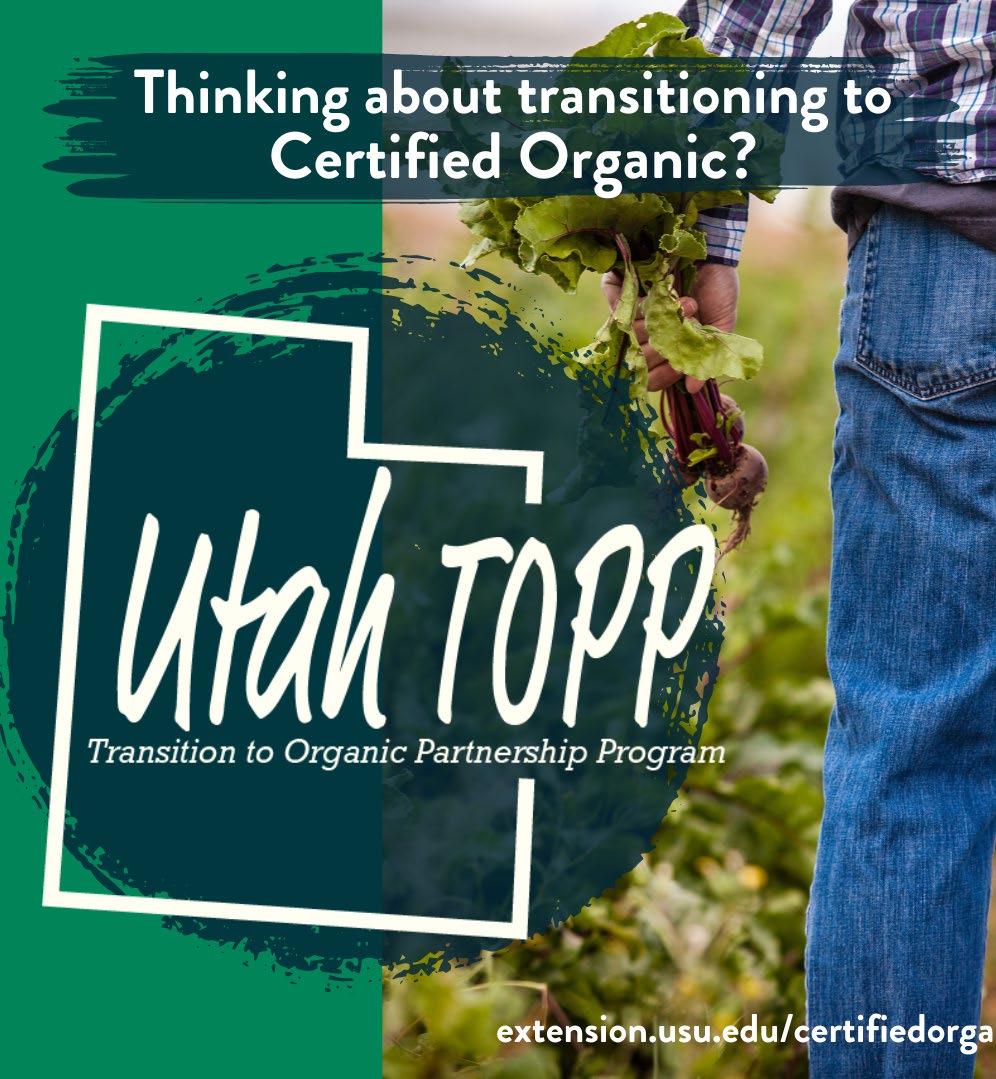
Mentors are experienced certified organic producers who want to share what they’ve learned and help guide transitioning farmers. Mentors will receive a $3,000 per year stipend for their time and expertise.
Applications are open on a rolling basis, so reach out any time!
Get In Touch
Michele Schahczenski Organic Outreach Coordinator, USU Email: michele.schahczenski@usu.edu Phone: 406-498-5267
Learn More USU Certified Organic: extension.usu.edu/ certifiedorganic
Request or Become a Mentor: extension.usu.edu/ certifiedorganic/mentor
West/Southwest TOPP: organictransition.org/region/ west-southwest
Michele Schahczenski, Organic Outreach Coordinator

extension.usu.edu/planthealth Plant Health Newsletter / Spring -Summer 2024 / page 9
continued
Utah’s Transition to Organic Project,
Image courtesy James Coupland FarmForest Research bugwood.org
Guiding Commercial Vegetable Production in Utah

In spring 2024, the USU Extension Integrated Pest Management (IPM) and Production Horticulture programs published the fifth edition of the Utah Vegetable Production Guide. The guidebook is designed for commercial and small-scale vegetable producers who farm specialty crops to be sold via wholesale, produce stands, farmers markets, CSA subscriptions, or pick-your-own operations. The latest USDA Census of Agriculture reported that Utah commercial vegetable production encompassed 5,885 acres, a 9% decrease from 6,468 acres in 2017. However, the number of farms has increased 13% from 673 to 763. Much of this is due to urbanization and land subdivision, allowing for a growing number of intensive smalleracreage vegetable farms operating farms 1 and 9 acres.
Regardless of farm size, Utah presents unique production challenges to farmers such as a short growing season, large daily temperature fluctuations, intense solar radiation, alkaline soils, and limited water availability. Therefore, the need continues for the Utah Vegetable Production Guide as it provides production and pest management recommendations outlined for specifically for the region. All the chapters cover specific crop groups and their soil, nutrient, and water management, cultivation practices, along with integrated pest and disease management strategies.
The latest edition of the Utah Vegetable Production Guide contains a chapter on legume crops (peas
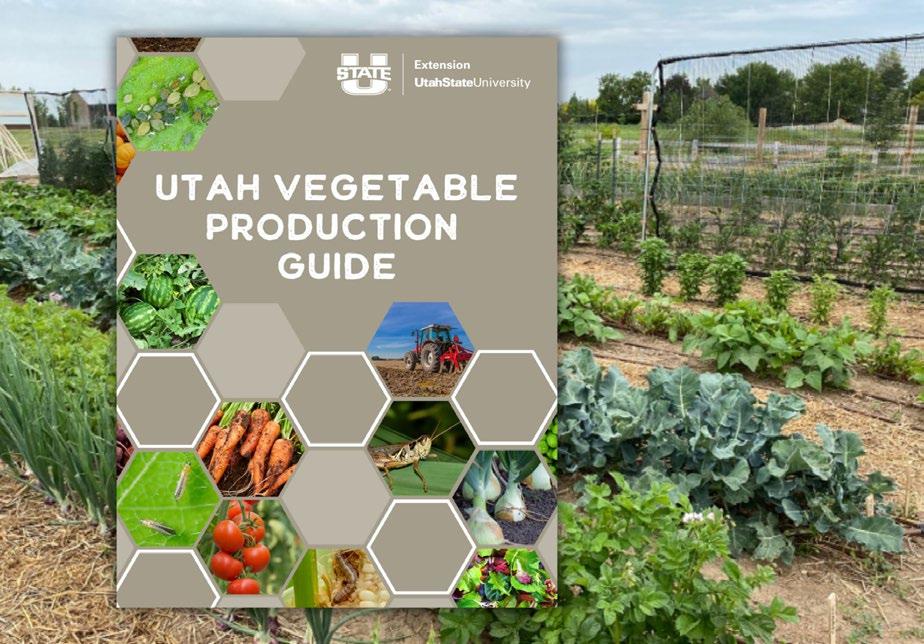
and beans) along with new insect and plant diseases problems included for other crop groups as they have become prevalent in recent years. The pesticide tables for each chapter have been updated for product availability including insecticides, miticides, fungicides, and bactericides for commercial applicators (those obtaining a license to purchase and apply products in larger quantities) and small-scale use products that can be purchased at garden nurseries, home improvement, or farm stores.
The Utah Vegetable Production Guide can be accessed digitally as a PDF online or purchased through the USU Extension online store for $20. Limited copies will also be available at county USU Extension offices. Additionally, the content from the guidebook is currently being converted to a website to allow users access on their computers and mobile devices.
Nick Volesky, Vegetable IPM Associate
Resources
United States Department of Agriculture. (2019). 2017 Census of Agriculture.
United State Department of Agriculture. (2024). 2022 Census of Agriculture.
Volesky, N., Murray, M., Olds, A., Snarr, A., Carey, B. (2024). Utah Vegetable Production Guide (5th Edition). [Guidebook]. Utah State University.
extension.usu.edu/planthealth Plant Health Newsletter / Spring -Summer 2024 / page 10
GENERAL IPM NEWS AND INFORMATION
Videos Provide High Impact Pest Management Education
In 2023, the USU Extension Integrated Pest Management (IPM) program was awarded funding to establish a ¼-acre (10,890 ft2) mixed-vegetable demonstration farm in Logan, UT. The primary objective of this farm is to provide educational outreach on pest management for vegetable producers. In Utah, the demographics of agricultural producers and how they access information is shifting. According to the 2022 USDA Census of Agriculture, the number of small farms (≤ 10 acres) operated by new and beginner producers (≤ 10 years of experience) increased 4.5% since 2017. For these producers, there has been an increase use of internet access in the past five years (123% specifically through mobile data plans). Using the educational demonstration farm, the IPM program strives to reach this growing group of beginning and technologyfriendly farmers through the use of video media content.
The use of video media has great potential to serve as an educational delivery method to engage agricultural producers. This is especially true in Utah, where vegetable producers may be inhibited from visiting a demonstration farm site or other outreach events due to their location or other farm obligations during the growing season. Producers often seek out short-form video content (less than 5 minutes) for information and instruction on topics like pest biology and management. It is important for extension programs to be present in video media spaces online to provide research- and evidence-based

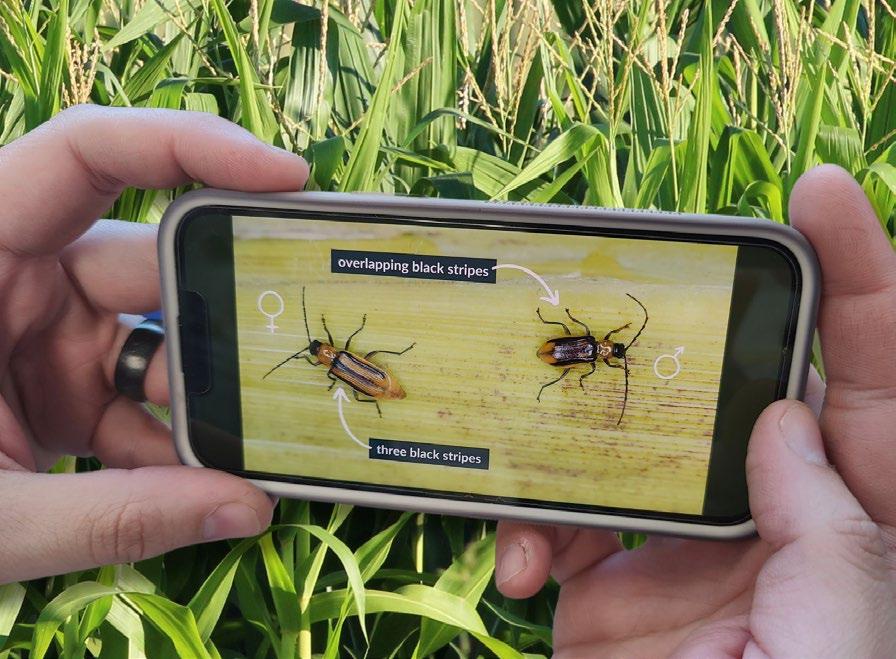
information, especially as there is a lot of content on topics relating to farming and pest management on the internet that is not always accurate.
During summer 2023, the IPM program collaborated with the USU Extension marketing team to write, film, and edit a series of nine videos of the demonstration farm covering common insect pests and management techniques applicable to Utah’s vegetable production. The videos featuring specific insects provide identification tips, describe symptoms, explain the life cycle, and provide cultural, mechanical, biological, and chemical control options. Other videos give a tour of the demonstration farm and provide instructions on non-chemical tactics like row covers, pheromone traps, and using plastic mulch and straw for weed control.
All the videos were posted to the USU Extension YouTube channel which has 46.1k subscribers (as of March 2024) and were cross-posted to the “USU Extension – Plant Health” social media channels (1.4k followers on Instagram and 2.1k followers on Facebook [March 2024]). On YouTube, the nine videos currently average 761 views, with the highest having 4,157. Viewership is impacted by the age of a video and relevance of topics. Going forward, the IPM program plans to produce more videos in the upcoming season to continue providing pertinent content for Utah’s vegetable producers.
continued on next page
extension.usu.edu/planthealth Plant Health Newsletter / Spring -Summer 2024 / page 11 GENERAL IPM NEWS AND INFORMATION
Videos Provide High Impact Pest Management Education, continued
Videos Produced in 2023 at the Demonstration Farm (click to view)
Demonstration Farm Tour
Using Plastic Mulch in Small Farms
Cabbage Looper Management
Imported Cabbageworm Management
Western Corn Rootworm Management
Resources
Using Straw Mulch for Weed Control
Three-Lined Potato Beetle Management
What Do Grasshoppers Eat?
Corn Earworm/Tomato Fruitworm Management
Nick Volesky, Vegetable IPM Associate
Freeman, A., Adams Becker, S., Cummins, M. (2016). NMC Technology Outlook for Cooperative Extension 2016-2021: A Horizon Project Sector Report. Austin, Texas: The New Media Consortium. https://www.learntechlib.org/p/182062/
Jernigan, H., Edgar, L., Miller, J., and Cox, C. (2015). Communication Technology Training Beyond the University Campus: A Case Study of Skill Development in the Arkansas Cooperative Extension Service. North American Colleges and Teachers of Agriculture Journal. 59:2. https://www.jstor.org/ stable/nactajournal.59.2.122
Stock, M. (2020). High Impact Extension Programming with Instagram. HortTechnology 30:6. https://doi.org/10.21273/HORTTECH04693-20
United States Department of Agriculture, National Agricultural Statistics Service. (2023). 2022 Census of Agriculture, Utah, State and County Data. https://www.nass.usda.gov/Publications/AgCensus/2022/Full_Report/Volume_1,_Chapter_1_State_Level/Utah/
2024 Commercial Tree Fruit Production Guide Now Available
The 2024 Intermountain Commercial Tree Fruit Production Guide is available for purchase at the USU Extension store (usuextensionstore.com/intermountain-commercial-tree-fruitguide) or can be accessed online as a pdf or web version here: intermountainfruit.org.
Fourteen chapters cover IPM methods, special pest management programs such as mating disruption, insect and disease descriptions with color images, organic management, thinning, irrigation, nutrition, and comprehensive spray recommendations of over 175 products based on crop stage and pest. The book is 200 pages. Purchase price is $20 (including shipping) and comes spiral-bound with UV-protected cover.

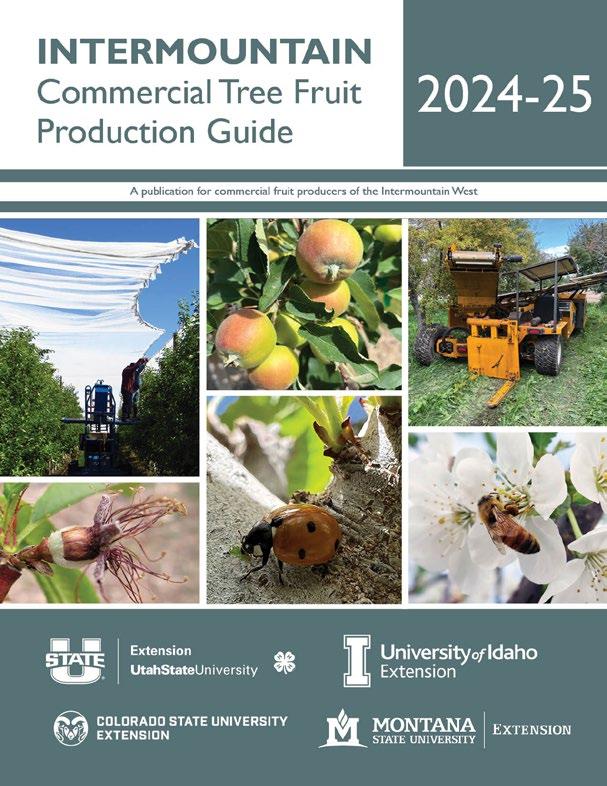
extension.usu.edu/planthealth Plant Health Newsletter / Spring -Summer 2024 / page 12
EPA Makes Changes to Diazinon, Chlorpyrifos, and Malathion to Protect Endangered Species
In 2022, the Environmental Protection Agency (EPA) determined that the current registered uses for diazinon, chlorpyrifos, and malathion could have adverse effects on some species listed under the Endangered Species Act. As a result, chemical company registrants agreed to amend their product labels to reduce exposure of listed species to the insecticides via runoff and spray drift.
Diazinon uses for residential sites ended many years ago, and uses for commercial applicators are restrictive, such as a 4-day re-entry interval after application, and a 3-week pre-harvest interval. New restrictions for diazinon only relate to runoff mitigation.
•All aerial applications will be prohibited
•Restrictions on ground broadcast applications:
o User must only apply with the nozzle height no more than 4 feet above the ground or crop canopy.
o Applicators are required to select nozzle and pressure that deliver medium or coarser droplets.
o Do not apply when wind speeds exceed 15 mph.
o Do not apply during temperature inversions.
o Do not apply within 25 feet of aquatic habitats.
•Restrictions on Airblast applications:
o Sprays must be directed into the canopy.
o User must turn off outward pointing nozzles at row ends and when spraying outer row.
o Do not apply when wind speeds exceed 10 mph.
o Do not apply during temperature inversions.
o Do not apply within 25 feet of aquatic habitats.
o Do not apply within 65 feet of aquatic habitats for application rates greater than or equal to 1.5 lbs/acre when wind is blowing toward aquatic habitats.
•Restrictions on non-broadcast applications that occur within 300 meters of listed species habitats:
o No application within 25 ft of aquatic habitat
o Do not allow product to enter sewer systems, drainage systems, etc.
o Do not apply to impervious surfaces like sidewalks, driveways, etc.
o Do not apply to vertical surfaces above impervious surfaces that drain into drainage systems.
o Do not apply or irrigate to the point of runoff.
•A point system will be implemented for applications that occur within 300 meters of listed species habitats to assess risk to listed species.

Chlorpyrifos
In 2021, the EPA was ordered to revoke any application of chlorpyrifos on all food crops or animal feed. That revocation was challenged in court by several grower groups, resulting in the re-instatement of the food tolerances in 2024. However, in most western U.S. states, including Utah, Extension does not recommend this product to protect farmworker safety. The current changes include added restrictions related to runoff and drift mitigation.
•The use for “wide area and general outdoor treatments for ants and other miscellaneous pests” will no longer be on labels.
•Restrictions on non-broadcast applications that occur within 300 meters of listed species habitat include:

•EPA will develop and implement a monitoring plan to ensure current labeling does not create unanticipated wide area mosquito control near listed species habitats.
o No application within 25 ft of aquatic habitat
o Do not allow product to enter sewer systems, drainage systems, etc.
o Do not apply to impervious surfaces like sidewalks, driveways, etc.
o Do not apply to vertical surfaces above impervious surfaces that drain into drainage systems.
o Do not apply or irrigate to the point of runoff.
•A point system will be implemented for applications that occur within 300 meters of listed species habitats to assess risk to listed species.
extension.usu.edu/planthealth Plant Health Newsletter / Spring -Summer 2024 / page 13 GENERAL IPM NEWS AND INFORMATION
continued on next page
Diazinon
Malathion is a broad-spectrum insecticide that is currently available for use for residential and commercial areas. As with the products above, its use is becoming more restrictive, such as allowing only two applications per season on residential fruit trees. New requirements for malathion include buffer zones, application method and wind direction
•EPA will develop and implement a monitoring plan to ensure current labeling does not create unanticipated wide area mosquito control near listed species habitats.
•Restrictions on non-broadcast applications that occur within 300 meters of listed species habitats:
o No application within 25 ft of aquatic habitat
o Do not allow product to enter sewer systems, drainage systems, etc.
o Do not apply to impervious surfaces like sidewalks, driveways, etc.
o Do not apply to vertical surfaces above impervious surfaces that drain into drainage systems.
o Do not apply or irrigate to the point of runoff.
Geographically-specific mitigation will be employed to address the risk posed by broadcast applications of malathion that occur within 300 meters of listed species habitat.
•ULV applications (excludes wide-area mosquito control): Applicators must select nozzle and pressure that deliver fine or courser droplets in accordance with American Society of Agricultural & Biological Engineers Standard (ASABE).
o Do not release spray at a height greater than 10 ft above the ground or vegetative canopy, unless a greater application height is necessary for pilot safety.
o Applicators must use a full swath displacement upwind at the downwind edge of the field.
o Do not apply when wind speeds exceed 15 mph at the application site. If the wind speed is greater than 10 mph, the boom length must be 65% or less of the wingspan for fixed wing aircraft and 75% or less of the rotor diameter for helicopters. Otherwise, the boom length must be 75% or less of the wingspan for fixed-wing aircraft and 90% or less of the rotor diameter for helicopters.
o Do not apply during temperature inversions.
•Non-ULV application: Do not release spray at a height greater than 10 ft above the ground or vegetative canopy, unless a greater application height is necessary for pilot safety. Applicators must select nozzle and pressure that deliver medium or coarser droplets in accordance with American Society of Agricultural & Biological Engineers Standard (ASABE S641).
o If the wind speed is 10 miles per hour or less, applicators must use 3/4 swath displacement upwind at the downwind edge of the field. When the wind speed is between 11-15 miles per hour, applicators must use a full swath displacement upwind at the downwind edge of the field.
o Do not apply when wind speeds exceed 15 mph at the application site. If the wind speed is greater than 10 mph, the boom length must be 65% or less of the wingspan for fixed wing aircraft and 75% or less of the rotor diameter for helicopters. Otherwise, the boom length must be 75% or less of the wingspan for fixed-wing aircraft and 90% or less of the rotor diameter for helicopters.
o Do not apply during temperature inversions.

o Do not apply within 100 feet (aerial) or 50 feet (ground) of aquatic habitats. Note: The label must specify that this 100’ buffer is in addition to the ~60-foot buffer provided by a full swath displacement requirement.
o Buffer zone distances for non-ULV broadcast applications are scale depending on winddirection and proximity to species habitat. This mitigation component will be implemented on Bulletins Live so that end-users can determine whether they are in proximity to the species’ habitat.
Marion Murray, IPM Specialist and Megan Kast, IPM Technician
extension.usu.edu/planthealth Plant Health Newsletter / Spring -Summer 2024 / page 14
EPA Makes Changes to Protect Endangered Species, continued
Malathion
IPM In The News
Cause of Toxic Alkaloid in Barley
Barley is one of the most commonly grown cereals. Some cultivars produce a toxic alkaloid called gramine that protects it from certain plant pathogens but also make it toxic to ruminants. Scientists have tried unsuccessfully to breed plants with either higher or lower levels of gramine. New research by a team from IPK Leibniz Institute and the Leibniz University will help overcome this challenge. They discovered two genes in barley that contribute to the biosynthesis of gramine, disclosing the complete biosynthetic pathway. This discovery is the start to reducing barley’s toxicity to ruminants and increasing its resistance to pests.
Quarantines Important for Emerald Ash Borer
The emerald ash borer continues to spread across North America as one of the most harmful invasive tree pests. Management of the pest has proven difficult due to its natural and humaninduced spread. After USDA APHIS rescinded the domestic quarantine on EAB in 2021, states are left to develop their own policies. A group of researchers at Carleton University in Canada developed a complex pest dispersal model that incorporates biocontrol and quarantine measures to determine optimal budgeting strategies for emerald ash borer in urban areas. The results, published in Conservation Science and Practice, showed management strategies that spend 20% of budget on quarantines worked relatively well, but the best results were seen when 98-99% of the budget was spent on quarantine and 1 to 2% on biological control with parasitoids.
Pesticide Risk on Greens
In order to determine if golfers risk exposure to pesticides in golf courses, American Chemical Society researchers asked volunteers to play 18 holes on a course that had been treated with four common turf pesticides an hour prior, and to remain on the course for 4 hours. To measure exposure, half the volunteers wore cotton full-body suits with veils, socks, and gloves plus air samplers that would capture airborne residues. The other half wore cut-off cotton suits over their own golfing clothes and submitted urine samples afterward. The research team found low pesticide residues only on the hands and lower legs of the suits. The urine samples produced hazard quotient values that indicated little risk to the players for all four pesticides.
Crickets as Animal Feed
Corn grain that is contaminated with Fusarium verticillioides contains a mycotoxin called fumonisin, rendering it inedible for livestock. Instead, contaminated grain is used for ethanol production or discarded. Researchers with the U.S. Department of Agriculture’s Agricultural Research Service are exploring the use of crickets as an alternative food source for livestock, especially as demand is growing for alternative protein sources in animal feed. Their study found that fumonisin did not affect the crickets, even after 34 days of feeding. This study could be the first step in reducing the costs of preventing and managing mycotoxins in low-quality feed while create another protein ingredient in animal feed.
Native Snail Affected by Pesticide
Nemaslug, based on the nematode Phasmarhabditis hermaphrodita, is a product used to control slugs and snails. It is used in many countries outside the U.S. in agricultural settings. There are currently strong efforts to commercialize this product in the U.S. However, a biologist from Oregon State University published in Plos One that the product is also lethal to a species of snail endemic to the Pacific Northwest called the Pacific sideband snail. Denver suggests that the use of Nemaslug could harm this and other non-target native species, negatively impacting the ecosystem, and that more research is needed before registration.
Effects of Longer Seasons on Honey Bees
New research out of Washington State University suggests that lengthening of the warm seasons—especially fall— can have significant negative impacts on honey bee colonies. Worker bees leave the hive to forage for food as long as temperatures are sufficiently warm, despite honey supplies in the hive. The research team conducted multiple simulations using climate predictions for 2050 and 2100, finding that bee colonies would likely collapse in the spring due to the overexpenditure of energy when flying later in the fall as temperatures rise. The team suggests a solution would be placing active hives in cold storage from midfall to spring to preserve the bees’ energy.
extension.usu.edu/planthealth Plant Health Newsletter / Spring -Summer 2024 / page 15 NEWS, PUBLICATIONS, AND MORE
Featured Picture of the Quarter
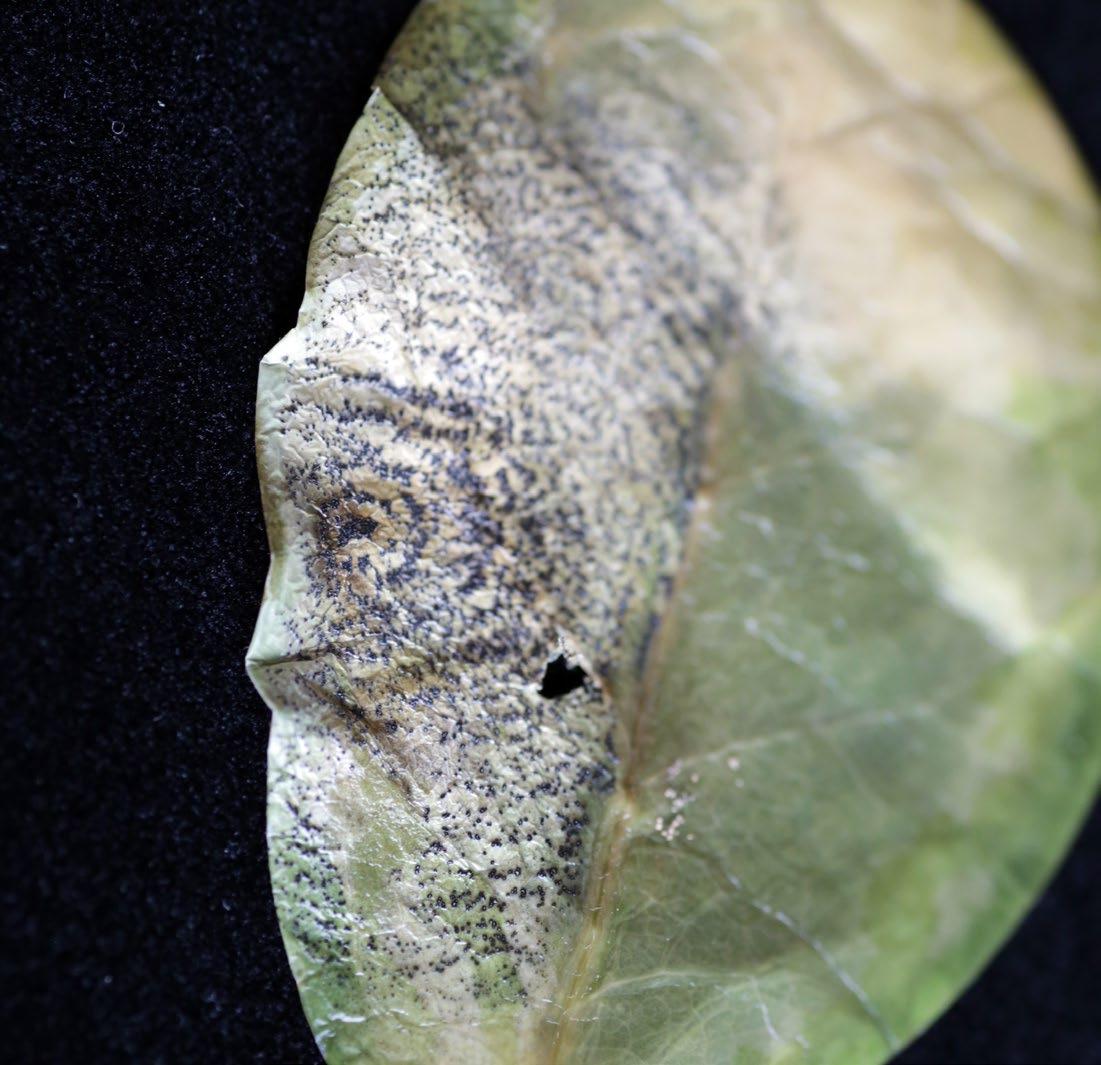
Hoyas (“wax plants” or “porcelain flowers”) are a group of popular houseplants with a waxy appearance of their flowers and leaves. Most of them are easy to grow from cuttings and sometimes just a leaf will take root.
However, if grown in a humid or densely planted area such as a greenhouse, they are susceptible to anthracnose (Colletotrichum sp.). This leaf, from a hoya plant in a commercial nursery in Utah, was sent to the UPPDL for diagnosis.
Symptoms include dark brown leaf and stem spots and wilting of leaves that can result in dieback and reduction in plant quality. The fungus survives as mycelium on plant residue in soil, on infected plants, and on seeds. New infections are spread via spores in the wind or by human touch.
Image by Claudia Nischwitz, Extension Plant Pathologist
PLANT HEALTH people and programs are supported by:




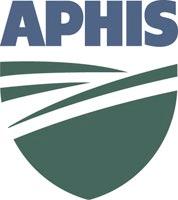

In its programs and activities, including in admissions and employment, Utah State University does not discriminate or tolerate discrimination, including harassment, based on race, color, religion, sex, national origin, age, genetic information, sexual orientation, gender identity or expression, disability, status as a protected veteran, or any other status protected by University policy, Title IX, or any other federal, state, or local law. Utah State University is an equal opportunity employer and does not discriminate or tolerate discrimination including harassment in employment including in hiring, promotion, transfer, or termination based on race, color, religion, sex, national origin, age, genetic information, sexual orientation, gender identity or expression, disability, status as a protected veteran, or any other status protected by University policy or any other federal, state, or local law. Utah State University does not discriminate in its housing offerings and will treat all persons fairly and equally without regard to race, color, religion, sex, familial status, disability, national origin, source of income, sexual orientation, or gender identity. Additionally, the University endeavors to provide reasonable accommodations when necessary and to ensure equal access to qualified persons with disabilities. The following office has been designated to handle inquiries regarding the application of Title IX and its implementing regulations and/or USU’s non-discrimination policies: The Office of Equity in Distance Education, Room 400, Logan, Utah, titleix@usu.edu, 435-797-1266. For further information regarding non-discrimination, please visit equity.usu.edu, or contact: U.S. Department of Education, Office of Assistant Secretary for Civil Rights, 800-421-3481, ocr@ed.gov or U.S. Department of Education, Denver Regional Office, 303-844-5695 ocr.denver@ed.gov. Issued in furtherance of Cooperative Extension work, acts of May 8 and June 30, 1914, in cooperation with the U.S. Department of Agriculture, Kenneth L. White, Vice President for Extension and Agriculture, Utah State University.
extension.usu.edu/planthealth Plant Health Newsletter / Spring -Summer 2024 / page 16
NEWS, PUBLICATIONS, AND MORE


































